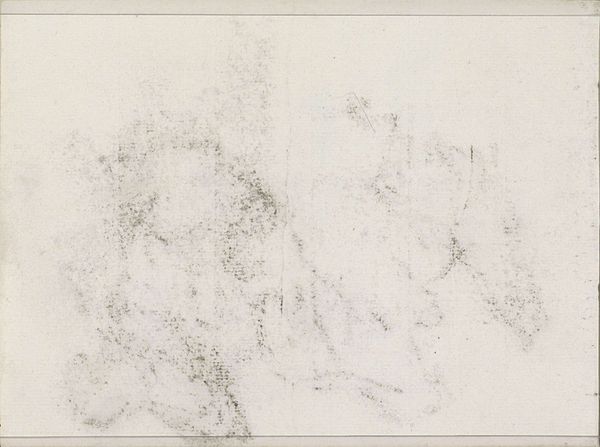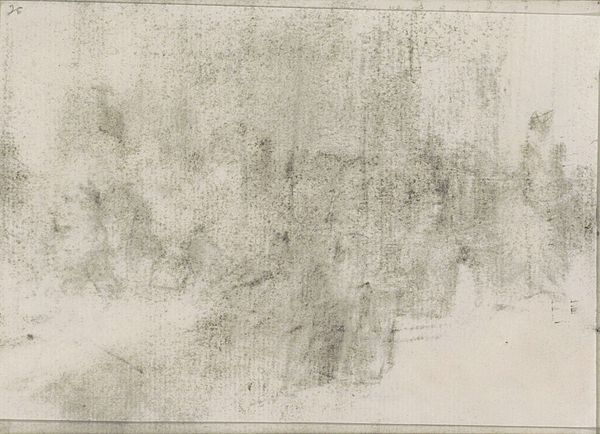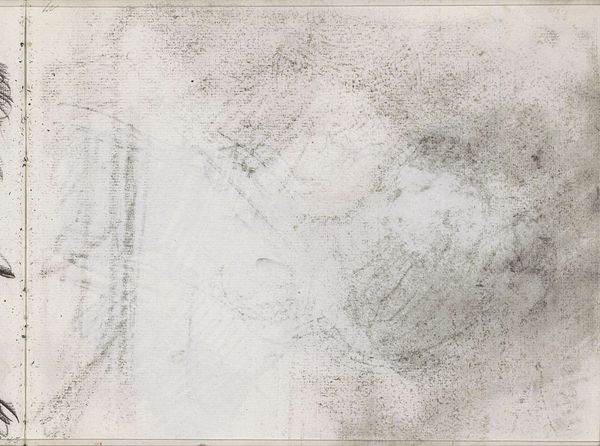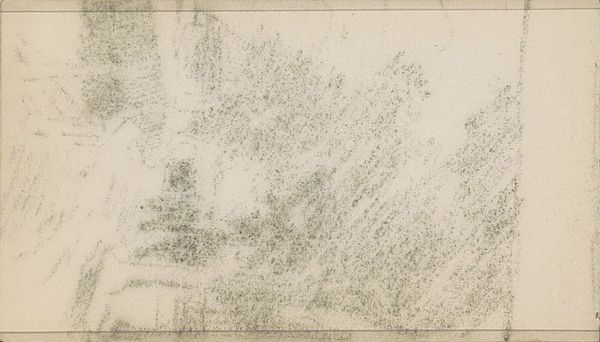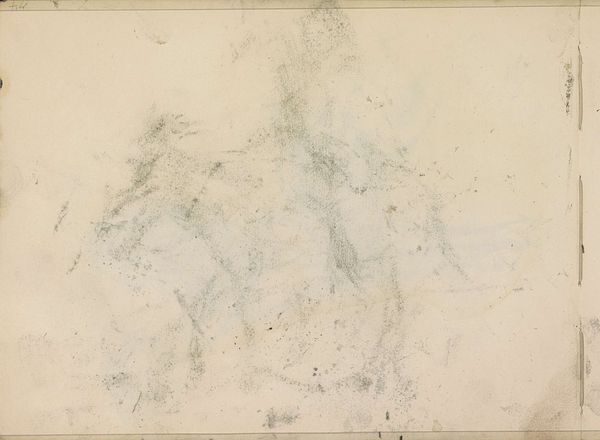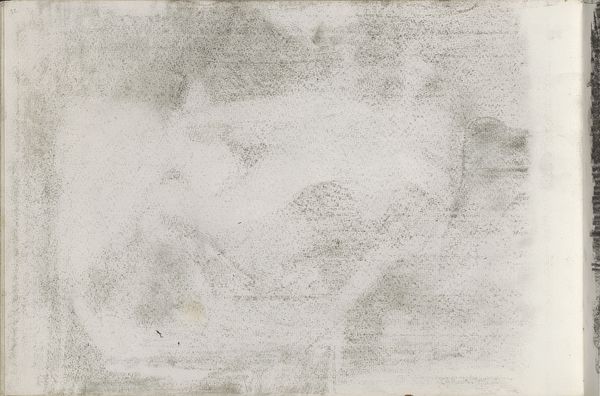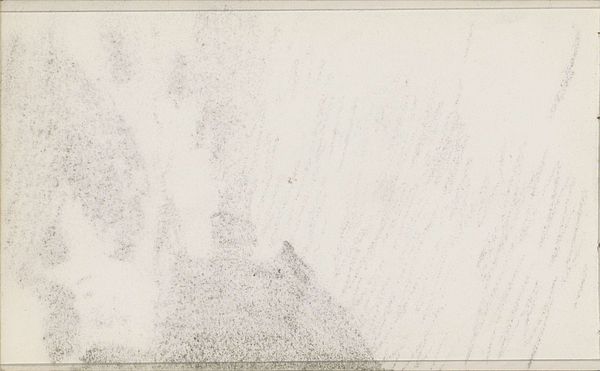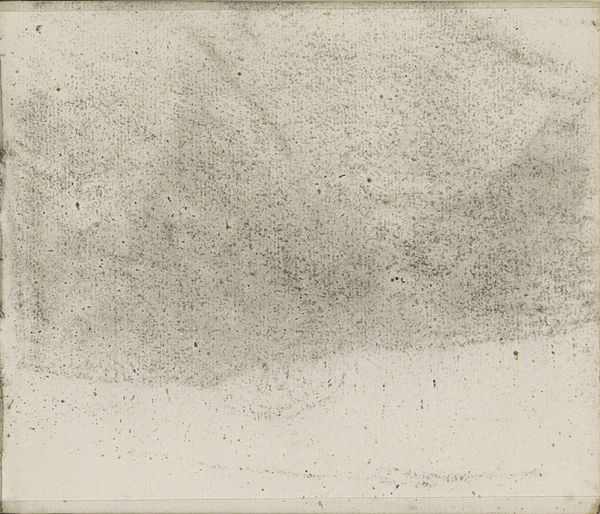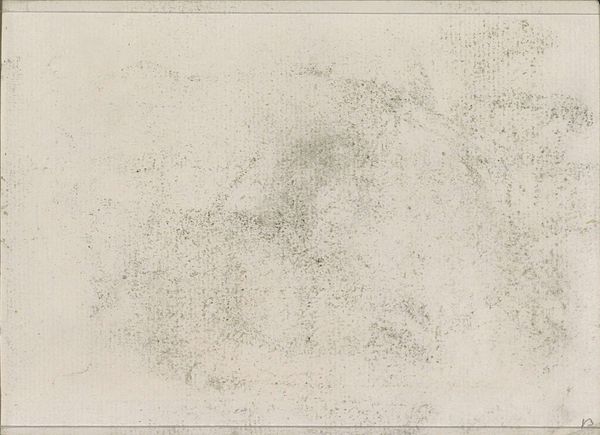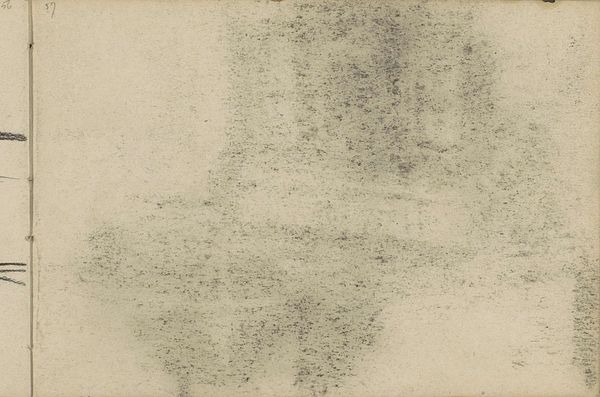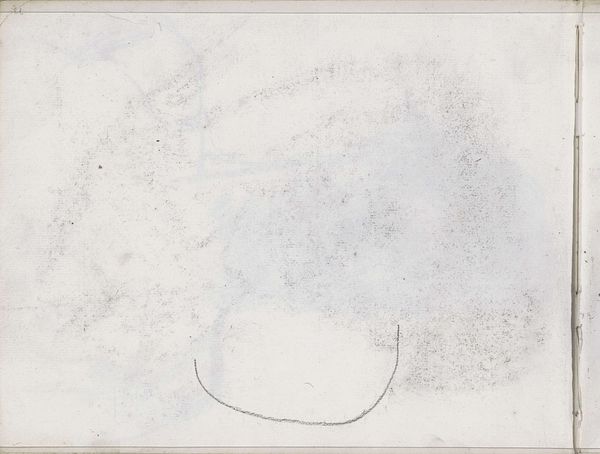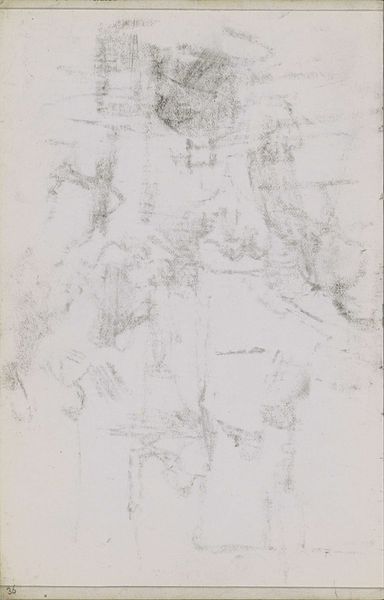
Copyright: Rijks Museum: Open Domain
Curator: Upon initial viewing, Isaac Israels' "Abklatsch van de krijttekening op pagina 30" conveys a certain ephemerality. It’s a pencil drawing on paper, dating from 1875 to 1934, currently held here at the Rijksmuseum. Editor: Ephemeral is a good word. The composition seems incredibly faint, almost ghostly, like a fleeting impression rather than a concrete image. What am I even looking at? It feels incomplete. Curator: It does invite that kind of scrutiny. Consider the texture—the rough grain of the paper interacting with the tentative pencil strokes. Look at how the varying pressure creates depth, or at least the illusion of it, even in such a sparse composition. Editor: While I appreciate the delicacy, I wonder about the subjects not being readily available. Is there a figure there? A landscape? If it isn't more recognizable, does the style lean into elitism? And does its placement in the Rijksmuseum serve a revisionist impulse of honoring all art in any stage? Curator: That is precisely where its intrigue resides. The sketch suggests a human presence through very simple means. Notice how little information is conveyed, and yet there is a distinct sense of… posture. A bend of the neck perhaps? The absence encourages our mind to fill in the details, thus collaborating with the artist, if only as voyeurs to an abandoned stage set. Editor: Collaboration assumes willing participation, and it isn't particularly inviting with this level of sketchiness. One has to put in far too much effort to find meaning. I suppose what it boils down to is asking "What's at stake for the audience if they choose to engage—or disengage—with this sketch?" Curator: Precisely! And the stakes, as you eloquently put it, are deeply intertwined with our own capacity for empathy. The drawing, in its skeletal form, compels us to clothe it with our personal histories and associations. To appreciate it requires active participation with oneself. Editor: Well, I suppose if art is intended to promote awareness of internal dialogue then its sparseness offers a path of introspection. Curator: Exactly. A quiet provocation. Editor: Yes. One definitely suited for a hushed gallery space like this one.
Comments
No comments
Be the first to comment and join the conversation on the ultimate creative platform.
